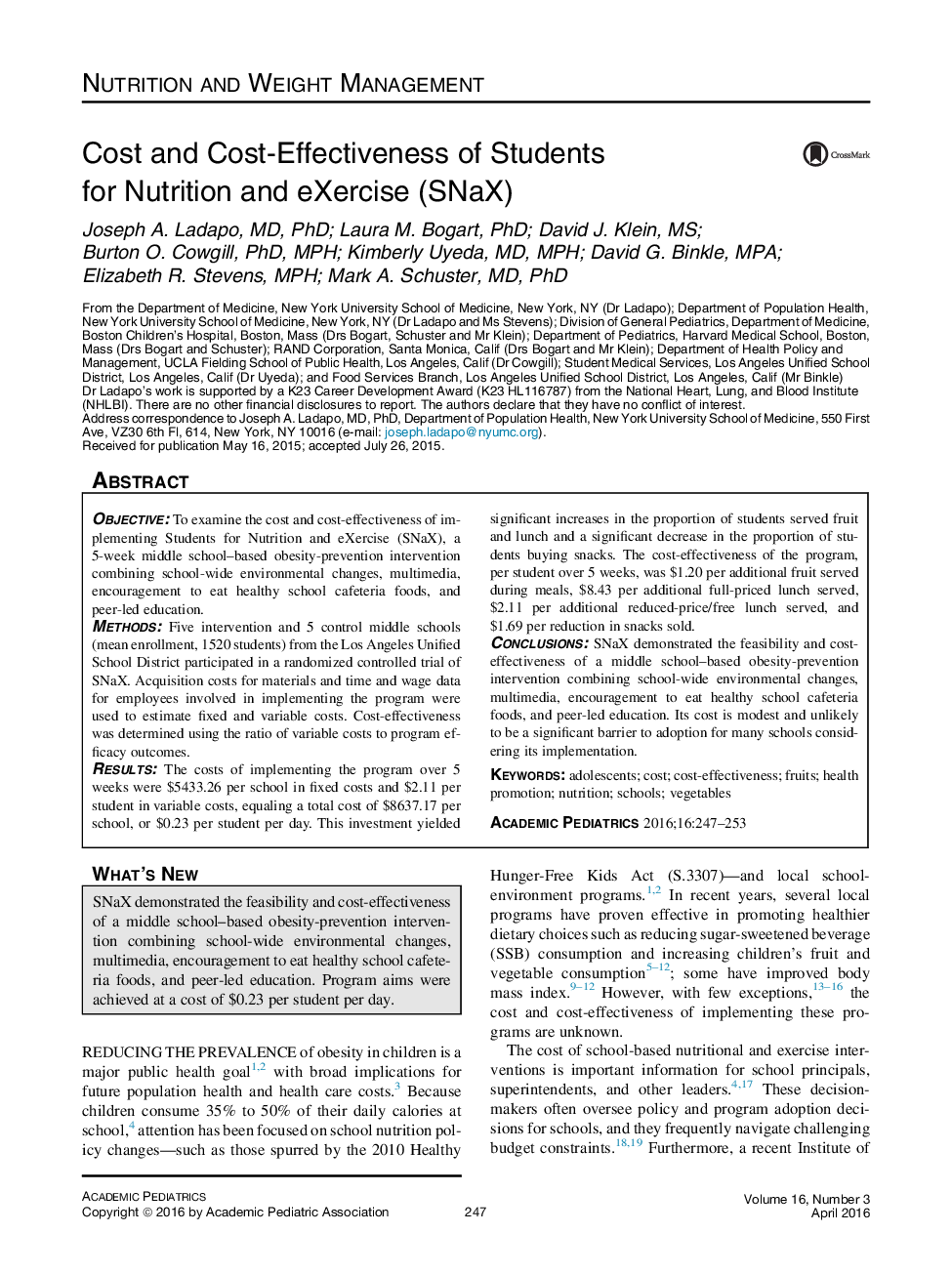| Article ID | Journal | Published Year | Pages | File Type |
|---|---|---|---|---|
| 4138962 | Academic Pediatrics | 2016 | 7 Pages |
ObjectiveTo examine the cost and cost-effectiveness of implementing Students for Nutrition and eXercise (SNaX), a 5-week middle school–based obesity-prevention intervention combining school-wide environmental changes, multimedia, encouragement to eat healthy school cafeteria foods, and peer-led education.MethodsFive intervention and 5 control middle schools (mean enrollment, 1520 students) from the Los Angeles Unified School District participated in a randomized controlled trial of SNaX. Acquisition costs for materials and time and wage data for employees involved in implementing the program were used to estimate fixed and variable costs. Cost-effectiveness was determined using the ratio of variable costs to program efficacy outcomes.ResultsThe costs of implementing the program over 5 weeks were $5433.26 per school in fixed costs and $2.11 per student in variable costs, equaling a total cost of $8637.17 per school, or $0.23 per student per day. This investment yielded significant increases in the proportion of students served fruit and lunch and a significant decrease in the proportion of students buying snacks. The cost-effectiveness of the program, per student over 5 weeks, was $1.20 per additional fruit served during meals, $8.43 per additional full-priced lunch served, $2.11 per additional reduced-price/free lunch served, and $1.69 per reduction in snacks sold.ConclusionsSNaX demonstrated the feasibility and cost-effectiveness of a middle school–based obesity-prevention intervention combining school-wide environmental changes, multimedia, encouragement to eat healthy school cafeteria foods, and peer-led education. Its cost is modest and unlikely to be a significant barrier to adoption for many schools considering its implementation.
